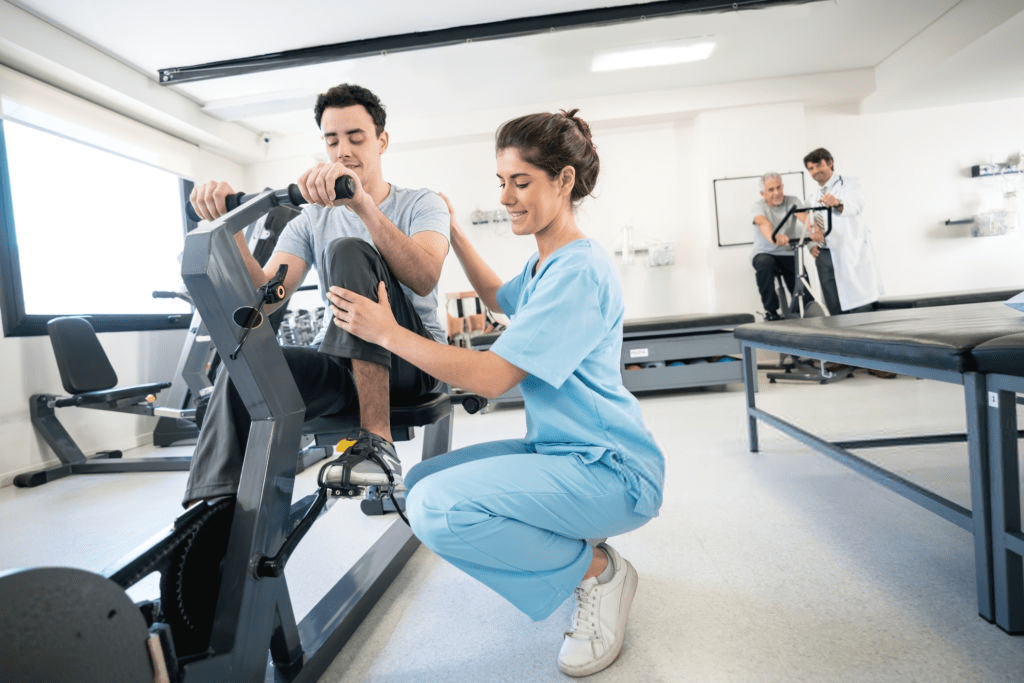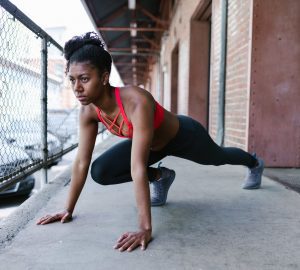Exercising is great for fitness, but it can also lead to injury. In 2019, a whooping 468,000 injuries were caused by exercises. Exercise injuries are caused by various factors such as inadequate warming up, over-exerting oneself, or using the wrong equipment. Of course, accidents and ailments can also lead to life-altering injuries and prevent you from doing your daily activities. These injuries cause chronic pain, muscle imbalance, movement dysfunction, and motor control problems that can keep you from carrying out your daily activities, working out, or playing a sport you love. You can use corrective exercises for injuries to help your body heal and regain some of the lost function.
What are corrective exercises?
When we are regularly active in sports or daily workouts, our bodies undergo strain that can lead to muscle stress, torn joints, tendons, and ligaments.
These issues strain the body affecting our posture, mobility, motor control, and stability. They may cause chronic problems or affect the way we perform our physical activities.
Corrective exercises are an excellent way to solve these physical limitations and relieve pain. These exercises correct body mechanisms and muscle imbalance after injury and can also improve the body’s performance by strengthening the muscles, correcting joint dysfunctions, and helping you to move better during training or athletics.
Where there is postural distortion, these exercises can also help. Studies show that corrective exercises that improve posture can relieve chronic neck pain.
Five corrective exercises you can try!
Some examples of corrective exercises are:
1. Foam roller workouts
The foam roller is an excellent tool to use in corrective exercises such as quadricep workouts for strengthening the upper leg. These workouts also help avoid strain on the spine.
A simple foam roller workout involves rolling each leg for a minute on a foam roller. Be sure to focus on any sore spots by holding these areas over the roller to help loosen any tight tissues.
2. Baseball workouts
Using a baseball, you can recondition any weak or dysfunctional tissues in the gluteus muscles. Just lie on your back, bend your knees, and roll a baseball under your gluteal muscles focusing on any sore spots.
Doing baseball workouts for at least two minutes a day will strengthen these muscles and loosen the lower back and hips.
3. Hip flexor stretches
When hip flexor muscles are shortened, it can misalign the pelvis, hips, and spine, causing pain. Hip flexor stretches can help.
Do these exercises by kneeling on one knee with your other foot in front of you and lifting your chest upright. Contract your glutes and tuck in the pelvis as you lift your chest.
You will feel the leg you are kneeling on and your hip stretch. Doing hip flexor stretches for up to a minute will realign your pelvis, spine, and hips.
4. Standing scaption
A great workout that can strengthen your shoulders is standing scaptions. You can do these easily by standing with your legs shoulder-width apart and your toes facing forward. Ensure your abdominal muscles and head are neutrally aligned.
Slowly lift your arms diagonally in a Y format, hold for a second or two, then slowly lower them. Repeat standing scaptions for three sets and rest.
5. High plank
Use the high plank to strengthen your back, shoulders, core, hamstrings, and glutes.
Start by going down on all fours, and ensure your back is straight. Next, straighten your legs behind you, raise your hips, and keep your hands firmly planted on the ground.
Streamline your body, engage your core, arms, and legs. Look down, and hold this position for a few seconds to a minute. Repeat the planks for three sets and rest.
It’s important to start your corrective exercise regimen with techniques that massage your tissues, such as the baseball and foam roller workouts.
Afterward, you can move on to stretching exercises such as hip flexor stretches and wall rotation stretches. Finish your regimen with some strengthening workouts such as squats and high planks.
Taking it slow with these exercises is the right way to get back into shape. It’s not recommended that you push your body too hard.
Who can benefit from corrective exercises?
Corrective exercises are ideal for athletes or people who regularly exercise. These workouts can help you deal with any physical problems you develop due to everyday wear and tear of exercise.
They can help heal ligament sprains, inflamed tendons, and knee cartilage tears. You can also use them to loosen tight hips and hamstrings, strengthen knees, and ease chronic joint pain.
Athletes and exercise enthusiasts can also use corrective workouts to prevent injury or improve performance by building core stability or improving joint mobility.
When is it not safe to do corrective exercises?
If you are recovering from an ailment or injury, it is recommended that you seek advice from your doctor before performing corrective exercises. That way, you will avoid worsening any injuries or problems in your body.
If you are pursuing a personal injury case, your personal injury attorney may not feel it’s a good idea to do corrective exercises while pursuing your claim. Many times insurance companies take advantage of such actions to mean your injuries are not as severe as you claim, which may reduce your compensation.
Therefore, corrective exercises must be done with caution as they are not always the right exercises to perform in all situations.
What can you expect after doing corrective exercises?
Corrective exercises are not complicated. You also don’t have to do them for long. Just a few minutes each day can make a big difference.
When you perform corrective exercises, expect them to;
- Activate and lengthen your muscles;
- Reduce joint and muscle soreness;
- Strengthen muscles and posture;
- Increase your range of motion, and;
- Correct your movement.
What about movement retraining?
Once you have solved your physical problems using corrective training, you should consider adding movement pattern retraining to ensure the issues you solve do not reoccur.
Movement pattern training, also known as functional training, helps you master the correct way to do different exercises or engage in physical activity using the proper form.
Studies show that movement pattern retraining can help people with chronic hip joint pain.
Functional training involves teaching your body to do simple movements such as bending or pushing yourself off the floor correctly, which will help you train or exercise using the correct format.
After corrective exercise, you need movement pattern retraining to help you learn the right way to do various movements. Learning or re-learning these patterns will prevent imbalances and future problems such as lower back injuries.
Conclusion
That’s information on corrective exercises. You also have a few examples of corrective exercises and tips on how to do them.
Since corrective exercises are a great way to improve your performance and reduce the chances of getting an injury, it’s a good idea to include them in your daily exercise program or athletic activities.
You can use corrective exercises as part of your regular exercise regimen to warm up or cool down. You can also use them during your rest days to hasten recovery. It will help you get more benefits out of your workout.
However, keep in mind that you need an expert assessment before embarking on any corrective exercises. That way, you can get advice on the exact exercise sequence to use for your problem.
If you feel doing corrective workouts alone is difficult, let a physical therapist help you through your exercise regimen. A couple of sessions a week can do wonders to alleviate aches and pains, correct musculoskeletal imbalances, heal injured tissues, and improve your performance.








